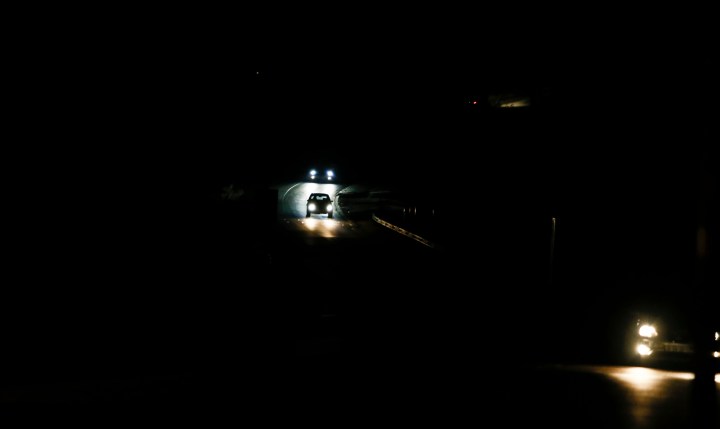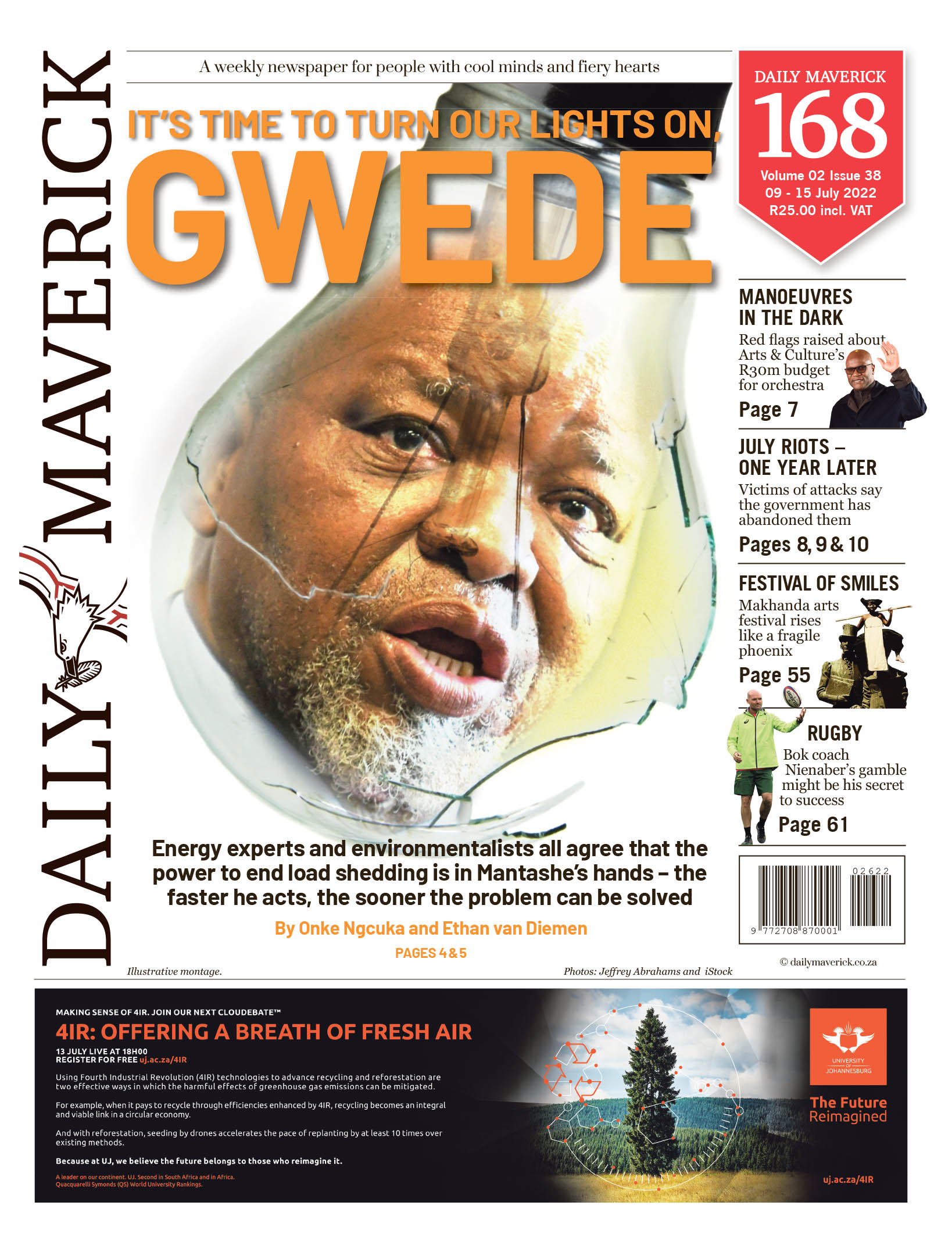THE ECONOMY
Recession and stagflation loom in South Africa thanks to load shedding

Talk about recession is all the rage these days in the US, Europe and other leading economies such as Japan and Canada.
Against the backdrop of worldwide fears of recession, South Africa’s battered economy can hardly escape unscathed.
Indeed, recession and stagflation are looming on the horizon in the face of intensified load shedding, cooling commodity prices, a rand that is on the ropes and ongoing state failure.
Even before Stage 6 load shedding was imposed for the first time since 2019, the South African economy was probably tipping into recession — the latest onslaught of rolling blackouts was just the final push.
A recession means that an economy has contracted for two consecutive quarters, or two straight three-month periods.
The jargon in public discourse will often refer to a “technical recession”, but a recession is a recession, finish and klaar. And many commentators still insist on using the nonsensical phrase “negative growth”, which puts a “positive” spin on things, as it includes the word “growth” when there is none.
And at the moment there is almost certainly no growth in the South African economy and it is possibly shrinking.
“We forecast real gross domestic product [GDP] contracted on a quarterly basis in Q2, and expect sluggish growth in the quarters to follow. The possibility of more intense load shedding in Q3 could see the economy enter into a recession,” said Jee-A van der Linde, an economist at Oxford Economics Africa.
Other forecasts are just a tad more optimistic and hinge in part on the extent of load shedding.
“Our GDP growth forecast for Q2 is zero — neither growth, nor contraction. And for Q3 we have a forecast of 0.5% (quarter-on-quarter not annualised) but there are now clearly more headwinds for Q3 than when we published that number. So it’s possible that we could get a recession if intense load shedding persists well into the quarter,” Absa senior economist Peter Worthington told DM168. “But we think Eskom will [probably] be able to de-escalate load shedding from Stages 4, 5 and 6 down to much less damaging Stage 2 again, now that an agreement on the wage deal has ended the … strike.”
Razia Khan, chief Africa and Middle East economist at Standard Chartered Bank in London, noted that high base effects will also be at play after South Africa’s economy surprised on the upside in Q1, when it expanded by a much brisker than expected 1.9% on a quarter-on-quarter, non-annualised basis.
“Given the better-than-expected momentum in Q1, which contributes to a high base, and the severity of load shedding in June, it is possible that we will see a [quarter-on-quarter] contraction in Q2,” she said.
Growth in Q1 pulled GDP back to pre-pandemic levels. So if it has been contracting since, then economic output is back below pre-pandemic levels. It’s a case of back to the future. And a slew of red lights suggests the economy is back to the future.
In April, mining production tanked almost 15% year-on-year while manufacturing output slid 7.8%. The KwaZulu-Natal floods that month played a starring role on this stage, their impact magnified by years of ANC rot in the region.
Collapsing confidence
Unsurprisingly, confidence — which is needed if consumers are going to consume and businesses are going to invest — has been gutted. The FNB/BER Consumer Confidence Index sank to -25 in Q2 from -13 index points in Q1. To put this in context, the only time it has been lower than this in the past three decades plus change was in Q2 2020, when it hit -33 in the face of the wrecking ball that was lockdown Level 5 in response to the outbreak of Covid.
Consumer confidence fell among all income groups, from the swelling ranks of the poor, who remain the majority in this deeply unequal society, to the affluent, who have disposable income and savings.
The BankservAfrica Take-home Pay Index recorded one of its biggest annual falls in May, dropping 6.7%.
“With ever-increasing claims on the disposable income of households, consumers are likely to feel the strain in coming months,” BankservAfrica said.
Meanwhile, the Absa Purchasing Managers’ Index declined slightly in June to 52.2. But the business activity subindex has been waylaid, averaging only 45 in Q2 compared with almost 59 in Q1. This is a strong signal that output in the manufacturing sector declined during Q2.
Pointedly, these surveys were all taken before Stage 6 load shedding bared its fangs, mostly thanks to the strike by some Eskom employees, who managed to wrangle a 7% pay hike from the bankrupt state-owned enterprise.
Rising interest rates
Interest rates are set to rise further when the South African Reserve Bank’s (SARB’s) Monetary Policy Committee (MPC) meets later this month. Since November last year, the MPC has hiked its key repo rate from a record low of 3.5% to 4.75%, bringing the prime rate to 8.25%, and another hike of at least 50 basis points is clearly in the deck.
Rapidly rising rates to contain inflation after years of ultra-loose monetary policy in advanced economies are seen as a key reason why so many are on the cusp of recession.
Consumer inflation in South Africa is currently running at 6.5%, driven mainly by surging food and fuel prices, and is a clear breach of the SARB’s 3% to 6% target range.
A global downturn will also curb South African economic activity and has put downward pressure on the prices of key commodity exports such as palladium and iron ore.
But the SARB’s hand is also being forced by the rand, which this past week hit its lowest levels against the dollar in close to two years, falling in tandem with the fragile euro.
The bottom line is that the cost of borrowing for businesses and households is on the rise at an inopportune time, as South African inflation is hardly the product of demand pressures.
Spiral of stagflation
Indeed, with the economy possibly slipping into recession, inflation accelerating and an unemployment rate of more than 34%, South Africa’s economy is also falling into a spiral of stagflation. This term is even being bandied about in developed economies such as Canada, where unemployment rates are at record lows.
It’s also depressing to note that the current levels of load shedding are taking place in an economy that may be contracting or at best barely growing. Let that sink in.
The strike was clearly a contributing factor, but there is no way Eskom could keep the lights on in an expanding economy, let alone one with vigorous rates of economic growth. It’s a cycle that is simply brutal. The only way to grow South Africa’s economy faster and attract the investment needed to do so is to have a reliable power supply, which is just a given in this second quintile — or “Stage 2” — of the 21st century.
But a rapidly growing economy with the kind of investment needed to build and operate things like smelters, mines and factories would completely overwhelm the grid and collapse it.
This economy, it seems, simply cannot win. DM168
This story first appeared in our weekly Daily Maverick 168 newspaper, which is available countrywide for R25.



















 Become an Insider
Become an Insider
I consider this article to be an indulgence by a writer who should do better. His prediction of stagflation is nothing less than sensationalism. In a way it’s a reflection of the tone this paper has adopted in all areas. I am finding it more difficult than I am comfortable with to read your articles. It is an easy out for journalists to predict disaster and to emphasize the negative. I appreciate what you have achieved and the enormous value of what you are achieving. But you need to consider that survival is achieved more often by believing in the future than by predicting doom. Using this strike driven Eskom disaster to predict stagflation is simply weak minded and opportunistic. Does it perhaps fit a preconceived notion of your writer that there is a no hope for a free South Africa? I hope not. But try and look on the bright side once in a while. I’ve discovered that the absence of electricity can be a pleasure. A bit of solar goes a long way. A good future is not founded anywhere in scratching the same itch. It’s found in turning itches into healed wounds and finding the others to heal. I do not believe that Eskom can’t be fixed. I do not believe we are on the way to lights on lights off as a regular thing. I believe that in this post – Zuma phase – assuming it is properly managed – there lies a far brighter future than stagflation and all that engages.